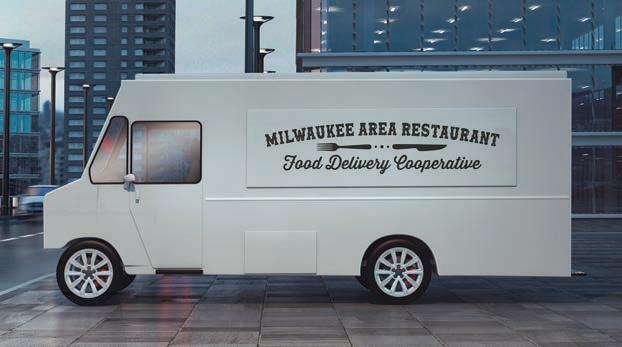
3 minute read
Issue of the Month
IS IT TIME FOR OUR RESTAURANTS TO FREE THEMSELVES FROM THE
TYRANNY OF THE NATIONAL FOOD DELIVERY COMPANIES?
Advertisement
By Louis Fortis
Restaurant food delivery services, along with pick-up and carry-out, have helped to keep many restaurants in business during the pandemic while providing a convenient service for their customers. But unfortunately, there is another side to this relationship that is behind the scenes. Talk to the owners of your favorite restaurants and you will invariably hear many complaints about the national food delivery giants like Grub Hub and the Uber Eats. You will hear such complaints as “I never asked to be involved with their delivery company and they just latched on to me and started advertising my menu.” Or “they are using an obsolete menu that I never gave them and won’t post my current menu causing me problems with my customers.”
The big complaint, of course, is “they’re charging me 20-30% off the top of my order as their fee.” And, “They advertise that they are our partners, but some of us never wanted to partner with them but now have little choice. Since these are national or international companies backed by hundreds of millions of dollars, they can do massive advertising to communicate with our customers to go to their websites so it comes down to, do I pay them their 20% or 30%, or do I lose getting the order.” Yes, it does sound like the type of business Tony Soprano could embrace, explaining that “I got a deal for yous restaurant guys.”
What Can Restaurant Owners Do?
America has a long history with many examples of how local communities or communities of businesses responded to the predatory actions of the large companies, starting with farmers over 150 years ago. Wisconsin and Minnesota led the way with farmers coming together to address a problem by taking it over and doing it themselves. One of the best models for responding to these circumstances is for the people
or businesses to organize and set up their own company. That is why we had and still have mutual savings banks and credit unions, for example, where the customers are also the owners.
The agricultural communities often set up producer cooperatives based on European models where small farmers organized to vertically integrate and take control of the next step by setting up their own processing companies (more importantly in the early years: buying inputs and transporting and marketing outputs cooperatively). Wisconsin dairy farmers, for example, set up their own dairy processing cooperatives that were owned by the small farmers. They became their own middleman. Some of these cooperatives and mutual companies have become very large businesses.
Land O’Lakes, an industry leader in dairy products, is a member-owned cooperative that deals with a whole array of agricultural products. Golden Guernsey is also a cooperative. Northwestern Mutual, one of Wisconsin’s largest companies, is a mutual company owned by its policyholders.
Should Restaurants Consider Taking Control of Their Destinies?
Should the restaurant owners come together and form a cooperative or use their well-established restaurant association to organize and create a locally owned producer cooperative to provide their delivery services? Wisconsin has excellent cooperative laws developed over the years that continue to have strong bipartisan support. Cooperatives are a type of for-profit business.
In a pure cooperative structure, each member is an equal owner and each member gets one vote. However, there can be many variations to the pure model where, for example, members don’t have equal share ownership, or even equal voting. The members elect a board to represent their interests and the board hires a CEO to manage all day to day operations of the business. It is run like any other for-profit business except it is member owned. The board members are all owners. All profits go to the members who are the owners and are often distributed in an amount proportional to the revenue










